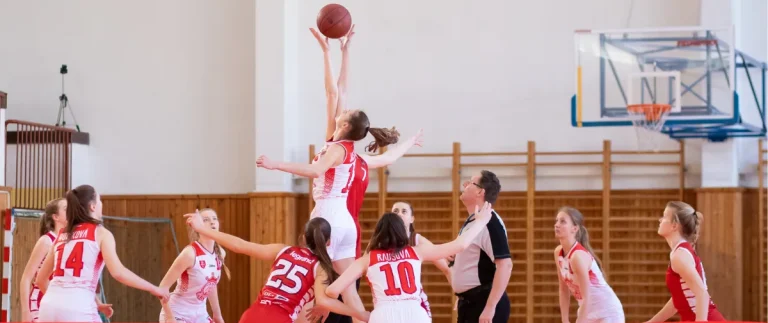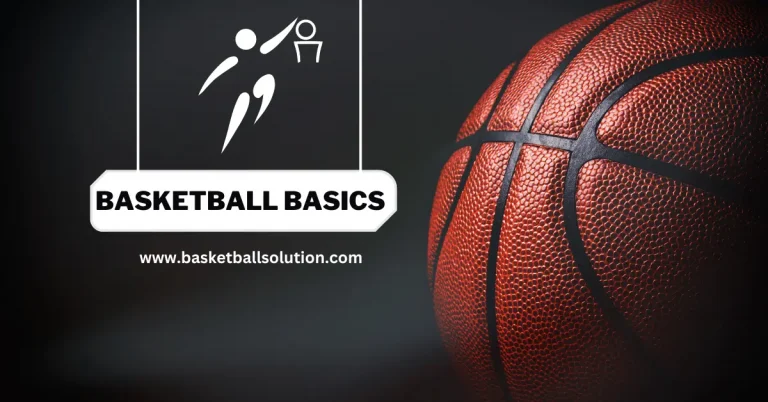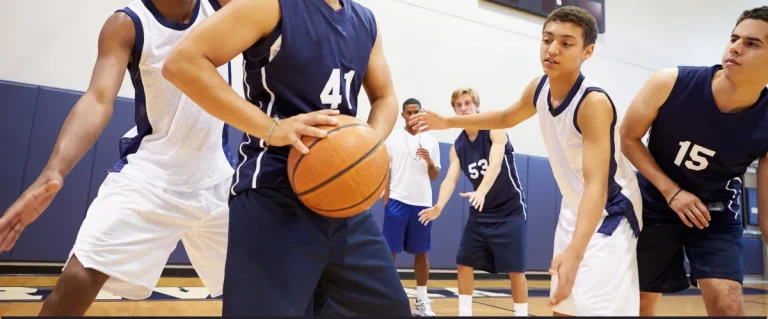What is the Over and Back Basketball Rule?
Basketball, a game of moves and rules, has a hidden gem called the “Over and Back” rule. It’s like a silent guardian, ensuring a fair game. Imagine a team racing to the opponent’s side but then retreating to their own; that’s where the Over and Back basketball steps in.
So, why eight seconds? Well, when a team grabs the ball in their half, they have eight seconds to cross the midcourt line. It’s like a countdown, adding a dash of urgency and strategy. But breaking this rule isn’t just a turnover; it’s a disruption in the game’s rhythm.
What Is over and back basketball rule?
In basketball, an “over and back” violation is a rule that comes into play during the offensive phase of the game. Once a team has successfully crossed the half-court line into their offensive side, they are not allowed to pass or dribble the ball back across the half-court line into the backcourt. If such a backward movement occurs, it results in a violation, leading to a turnover. The opposing team is then awarded possession of the ball.

The purpose of the over and back basketball is to maintain fair play and prevent teams from exploiting the court boundaries. It encourages a more dynamic and strategic offensive approach, emphasizing forward movement and territorial control. Violations are crucial in maintaining the integrity of the game and ensuring that teams adhere to the established rules for a balanced and competitive playing environment.
Basketball Court Division
In basketball, the court is divided into two main sections: the frontcourt and the backcourt. The frontcourt, extending from the midcourt line towards the opponent’s basket, is where the offensive team positions itself to score. Players in this area focus on executing offensive plays and making shots to score points.
On the flip side, the backcourt spans from the midcourt line toward the team’s basket. It serves as the zone for defensive maneuvers, guarding against opponent offenses, and facilitating transitions between defense and offense.

The midcourt line acts as a crucial boundary, separating the frontcourt and backcourt. Crossing this line marks a strategic shift between offensive and defensive responsibilities.
Understanding court dynamics is crucial for players, coaches, and enthusiasts. Effective offensive and defensive strategies hinge on the ability to navigate the court with precision and agility.
As players move between the frontcourt and backcourt, the ebb and flow of the game come to life, creating the thrilling spectacle that is basketball.
Time Limit in Basketball
In basketball, the offensive team operates under a designated time limit to transition the ball from the backcourt to the frontcourt. In the UK, this rule aligns with FIBA regulations, granting the offensive team a total of 8 seconds to advance the ball.
Once the offensive team gains possession in their backcourt, a crucial task is to successfully cross the midcourt line and enter the frontcourt within this specified 8-second time frame. Failure to achieve this timely transition results in a violation of the “over and back” rule, leading to a turnover and the opposing team gaining possession. This time limit adds a strategic element to the game, emphasizing the importance of efficient ball movement and court positioning for the offensive team.
Over and Back Rule Basketball Violation
The over and back basketball rule violation occurs when the offensive team, after successfully advancing the ball from the backcourt to the frontcourt, unintentionally moves it back into the backcourt. This violation leads to a turnover, with possession awarded to the opposing team.
To avoid this infraction, players must be mindful of their positioning on the court and the midcourt line. Once the ball has entered the frontcourt, it becomes imperative for the offensive team to refrain from sending it back into the backcourt, as doing so triggers the rule violation.
Coaches emphasize the importance of court awareness and strategic ball movement to prevent this rule violation. Failing to comply with the “Over and Back” rule not only results in a turnover but also provides the opposing team with an opportunity to capitalize on the mistake and potentially score. As such, understanding and adhering to this rule are integral to maintaining control and momentum during a basketball game.
Preventing Over-and-Back Violations in Basketball
Preventing over-and-back violations is crucial for maintaining possession and strategic control in basketball. Here are key strategies to avoid this infraction:
Court Awareness: Players must stay vigilant about their position on the court, especially about the midcourt line.
Communication: Effective communication among teammates is essential to ensure everyone is aware of their roles in ball movement and court positioning.
Ball Handling Skills: Developing strong ball-handling skills enables players to navigate the court with precision, reducing the likelihood of accidental turnovers.
Understanding Timing: Players should have a keen sense of the shot clock and the 8-second time limit for advancing from the backcourt to the frontcourt, minimizing rushed decisions.
Strategic Passing: Employing strategic passing techniques helps maintain ball control and ensures that the ball stays in the frontcourt during offensive plays.
Midcourt Line Recognition: Players should be trained to recognize the midcourt line and understand the consequences of crossing back into the backcourt.
Practice Scenarios: Regular team drills and simulations of game scenarios, including fast breaks and transitions, can reinforce good habits and decision-making under pressure.
Coaching Emphasis: Coaches play a pivotal role in emphasizing the importance of preventing over-and-back violations during training sessions and game preparations.
By integrating these preventive measures into training routines and fostering a culture of awareness, basketball teams can significantly reduce the occurrence of over-and-back violations, ensuring smoother offensive transitions and maintaining control on the court.
Restarting the Count
The 8-second count for the offensive team to cross the midcourt line restarts in the following situations:
Defensive Team Possession: If the defensive team gets possession of the ball, the 8-second count for the offensive team resets. The offensive team must then try to move the ball into the frontcourt within the given time limit.
Opposing Team’s Made Basket: When the opposing team scores a basket, the offensive team gets a new 8-second count to bring the ball into the frontcourt. The made basket acts as a signal for resetting the count.
Held Ball or Jump Ball: In the event of a held ball or jump ball situation where two opposing players gain simultaneous possession of the ball, the 8-second count is reset. This provides the offensive team with a new opportunity to cross the midcourt line within the specified time limit.
These situations provide the offensive team with a chance to regroup and restart their progress. It allows them to continue their attempt to advance the ball into the frontcourt. This ensures fair play and upholds the integrity of over-and-back basketball.
FAQs
Is over and back basketball the same as a backcourt violation?
Yes, “over and back” and “backcourt violation” refers to the same rule in basketball. When the offensive team fails to bring the ball from their backcourt to the frontcourt within the designated time, it leads to a turnover.
Why is over the back a foul?
Reaching over the back is considered a foul in basketball. Since it can lead to unsafe contact, it violates the principle of verticality. It creates an unfair advantage for taller or longer-armed players.
Are There Exceptions to the Over and Back Rule?
One exception is during the initial possession or after a change of possession, where the offensive team is allowed to enter the frontcourt without penalty.
How Does the Shot Clock Relate to the Over and Back Rule?
If an Over and Back violation occurs, the shot clock is reset to a new duration (usually 14 seconds) in leagues that use a shot clock.
Is Over and Back Rule Universally Applied in Basketball Leagues?
Yes, the Over and Back rule is a standard regulation applied in various basketball leagues globally, ensuring consistency and fairness in the game.
Conclusion
Over and Back rule basketball dictates that the offensive team must advance the ball from their backcourt to the frontcourt within a specified time limit. Failure to do so results in an Over and Back violation, leading to a turnover and the opposing team gaining possession. This rule ensures fair play, prevents teams from stalling, and promotes a balanced and dynamic game. Adhering to the Over and Back rule adds an element of strategy and urgency to offensive transitions, contributing to the excitement and competitiveness of basketball.

Passionate basketball player striving for excellence on and off the court. Dedicated to the game since youth, I have honed skills through years of practice. Explore my journey, gear reviews, and dunking tips. Let’s elevate our game together!







